The Evolution and Impact of Soundbreaking in Music
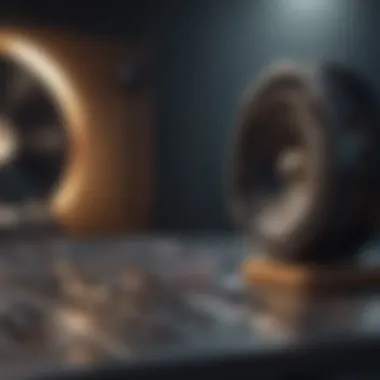
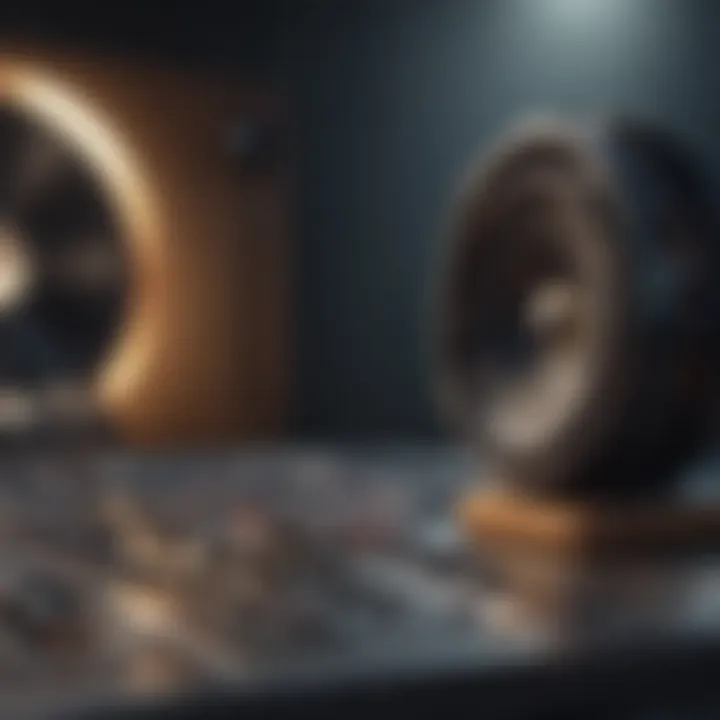
Intro
The evolution of music is not merely a journey through genres and styles; it is a history enriched by the concept of soundbreaking. This phenomenon represents the breaking away from traditional sound forms, allowing for innovation that has reshaped the music landscape. The exploration of soundbreaking aids in understanding how artists push boundaries. It showcases the ways in which music evolves, adapts, and often redefines itself. By analyzing key artists and movements, we will uncover the essence of soundbreaking and its lasting impact on both the creators of music and their audience.
Artist Profile
Biography and Background
In exploring soundbreaking, one cannot disregard significant figures who have embodied this transformative concept. Artists like David Bowie, Kraftwerk, and Madonna have pioneered new soundscapes, stepping beyond the conventional limits of music.
David Bowie, a British singer-songwriter, emerged in the 1960s as a significant figure in the glam rock movement. His willingness to embrace avant-garde ideas set him apart. Kraftwerk, the electronic music group formed in 1970, revolutionized sound with their pioneering use of synthesizers. Similarly, Madonna’s continuous reinvention and incorporation of various genres have contributed to her status as the "Queen of Pop." Each of these artists crafted their identity by challenging the existing paradigms of sound.
Major Influences and Inspirations
Identifying influences is key to understanding how artists have pushed the boundaries of sound.
- David Bowie was influenced by early rock, avant-garde art, and even literature, all of which informed his eclectic style.
- Kraftwerk drew from electronic experimentation and post-war cultural shifts in Germany.
- Madonna has cited diverse artists such as Marilyn Monroe and Aretha Franklin, enhancing her work with a rich tapestry of sounds and thoughts.
These influences often reflect broader cultural movements, making soundbreaking not just an individual endeavor but a collective transformation within society.
Song Analysis
Theme and Lyrics Breakdown
Analyzing the themes and lyrics of groundbreaking songs provides insight into the depths of soundbreaking. For instance, the lyrics of Bowie's "Changes" encapsulate the essence of transformation in identity, mirroring his own career shifts. Similarly, Kraftwerk’s "The Model" presents themes of technology's impact on human experiences. Madonna's "Like a Prayer" intertwines spirituality with personal liberation, showcasing her innovative use of themes.
Instrumentation and Composition
The unique instrumentation plays a crucial role in soundbreaking.
- David Bowie's use of androgynous vocals paired with eclectic instrumentation created a distinctive sound.
- Kraftwerk utilized drum machines and vocoders, shaping the future of electronic music.
- Madonna often collaborated with top producers, blending hooks from different genres and innovative sound design.
The composition techniques, such as layering and sampling, have allowed artists to expand their creative output dramatically. Each of these elements forms a critical part of the overall narrative of soundbreaking.
"Soundbreaking is not just about music; it encompasses cultural shifts and pushes artistic boundaries."
As we dissect these influential artists and their work, a clearer picture of soundbreaking will emerge, illustrating its importance in shaping contemporary music.
Understanding Soundbreaking
The topic of soundbreaking is essential for grasping the dynamic nature of music. Soundbreaking refers to the process by which artists and genres push boundaries and innovate within the music landscape. This concept is pivotal in understanding the evolution of music, its cultural significance, and its transformative nature on both artists and listeners.
Soundbreaking can elevate a musical piece by introducing unique elements not commonly found in earlier works. It challenges the status quo, encouraging musicians to explore different sounds, instruments, and production techniques. This exploration not only enriches the music experience but also impacts how listeners perceive and connect with sound.
Moreover, soundbreaking serves as a vehicle for artistic expression. It reflects the changing times and societal influences on music. As genres evolve and intermingle, artists find new ways to connect with their audiences, providing fresh narratives and experiences. This adaptability is key for aspiring musicians and music students, as it emphasizes the importance of creativity and innovation in their craft.
In this section, we will dissect the intricacies of soundbreaking, laying a foundation for understanding how music continually evolves, influencing both artists and audiences alike.
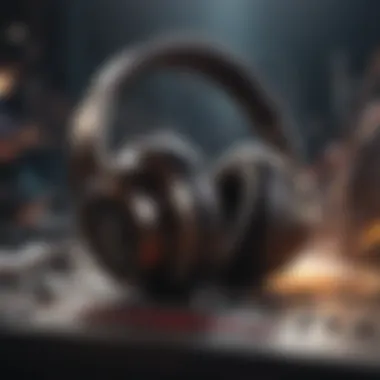
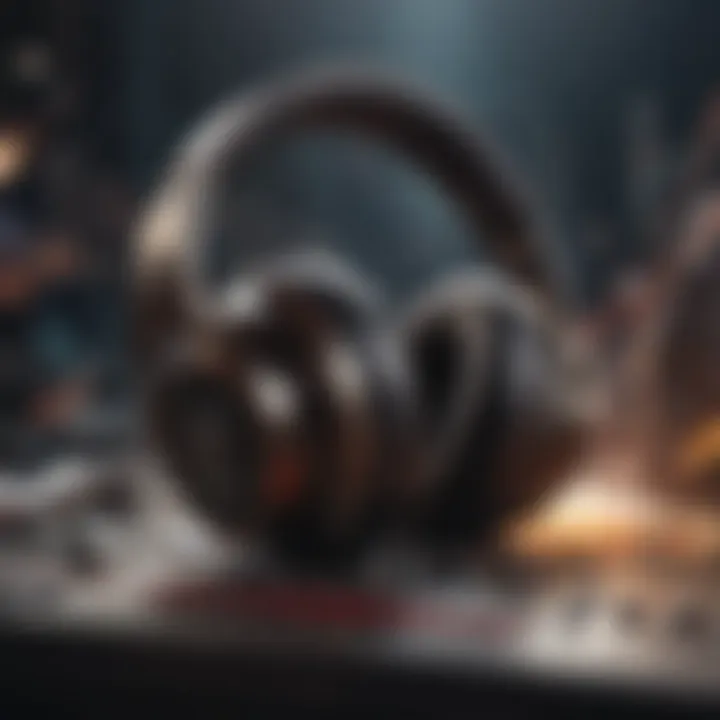
Definition of Soundbreaking
Soundbreaking can be defined as the innovative practice of pushing the boundaries of how music is created, experienced, and understood. This encompasses a variety of aspects, including the introduction of new genres, novel recording techniques, and the use of unconventional instruments. Moreover, soundbreaking does not only pertain to the music itself; it also applies to the artistic branding and presentation of music in various forms, from album artwork to live performances.
As an evolving concept, soundbreaking reflects a blend of technical advancements and creative musings in music. It moves away from traditional structures that might have limited artistic expression. Through soundbreaking, artists can capture the essence of their experiences while resonating with a broader audience. This ability to connect on deeper levels is central to the ongoing evolution of music.
Historical Significance
The historical significance of soundbreaking is vast. It has played a crucial role in major musical movements throughout history, from the classical era to contemporary hip-hop. Observing the evolution of sound in these contexts reveals much about societal changes and the diversity of artistic expression.
For instance, consider the emergence of jazz in the early 20th century. Jazz musicians such as Louis Armstrong and Duke Ellington broke away from classical conventions, introducing improvisation and unique rhythmic structures. This marked a significant departure from previous forms and opened the door to countless genres that followed.
Furthermore, soundbreaking has facilitated cross-pollination among genres. The fusion of different styles has led to innovative subgenres, such as rock and roll, which blended elements of blues and country music. This reflects how soundbreaking has consistently driven the evolution of music.
"Soundbreaking is not just about the music; it encapsulates a cultural movement that shapes our collective experience."
In summary, the concept of soundbreaking is instrumental in understanding the rich history and ongoing evolution of music. Its impact on various genres and associated cultural movements emphasizes its importance in the broader context of artistic and societal development.
Soundbreaking Across Genres
The concept of soundbreaking holds significant importance in understanding the evolution of music through various genres. It signifies the transformative processes that lead to new auditory experiences and ways of creative expression. Each genre has its unique characteristics, yet they often influence each other. This cross-pollination results in innovative sounds that reflect the cultural, social, and technological contexts of their time. By examining soundbreaking across genres, we can appreciate how artists push boundaries and redefine musical norms.
Soundbreaking in Classical Music
Classical music often serves as the foundation for many contemporary genres. Within this context, soundbreaking has occurred through the manipulation of musical structures and the incorporation of unconventional instruments. Composers like Igor Stravinsky and Arnold Schoenberg challenged traditional harmonic systems. Their works contributed to the shift from tonality to atonality, revealing new methods to express emotion and construct compositions. Stravinsky's "The Rite of Spring" notably caused a riot at its premiere due to its radical departure from established norms. This example shows how soundbreaking in classical music laid the groundwork for further innovations in other genres.
Influence on Jazz and Blues
Jazz and blues represent soundbreaking in rhythm, improvisation, and emotional expression. Innovators such as Louis Armstrong and Billie Holiday expanded the boundaries of vocal and instrumental techniques. The shift towards swing and bebop brought about a new complexity in melody and harmony, emphasizing individual musicianship. Jazz's ability to create spontaneous compositions relies heavily on this soundbreaking framework. Moreover, blues, rooted in African American experiences, evolved through the incorporation of electric guitars and amplification. This movement provided artists like B.B. King the means to engage with broader audiences while maintaining deep emotional connections in their performances.
Rock and the Advent of New Sounds
Rock music emerged as a rebellious response to the norms established by earlier genres. The soundbreaking witnessed here is characterized by the blending of various influences, including rhythm and blues, country, and folk. Pioneers like Chuck Berry and Elvis Presley redefined music composition and performance. The introduction of distortion and feedback in rock solidified its unique identity. Bands like The Beatles and The Rolling Stones further evolved this genre by experimenting with studio techniques and diverse influences, resulting in a rich tapestry of sound that appealed to a wide range of listeners. The adaptability of rock continues to inspire new movements and innovations within the music “landscape.”
The Evolution of Electronic Music
Electronic music represents perhaps the most radical approach to soundbreaking. Initially rooted in avant-garde experimentation, it has since transformed into an essential genre influencing pop culture. With the advent of synthesizers in the 1960s and 1970s, musicians began to explore sound at its core level. Artists like Kraftwerk and Brian Eno pioneered this art, emphasizing the aesthetic possibilities of technology. The merge of samples, loops, and digital manipulation has established genres within electronic music, including techno and house. Consequently, the growing acceptance of electronic influences across mainstream music charts underscores the wide-reaching ramifications of soundbreaking in this genre.
Music is a reflection of society’s evolving identity, and soundbreaking captures it at every turn.
Understanding the nuances of soundbreaking across genres enhances our comprehension of music's potential to innovate and inspire. Artists, through their unique experiences and cultural contexts, contribute significantly to these evolutions. The impact is felt far beyond the music industry, influencing societal norms and resonating with listeners worldwide.
The Role of Technology in Soundbreaking
The relationship between technology and music is profound and transformative. In the context of soundbreaking, technology does not merely support musical innovation; it drives it. Various inventions have fundamentally altered how music is produced, shared, and experienced. Understanding the role of technology in soundbreaking offers insights into how these advancements have shaped the contemporary music landscape and influenced artists and listeners alike.
Advancements in Recording Techniques
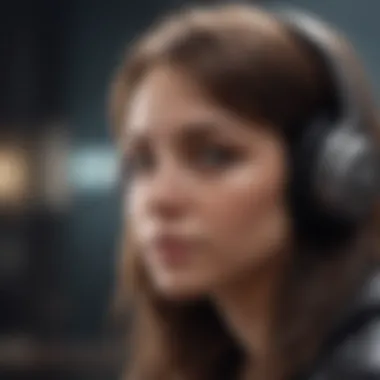
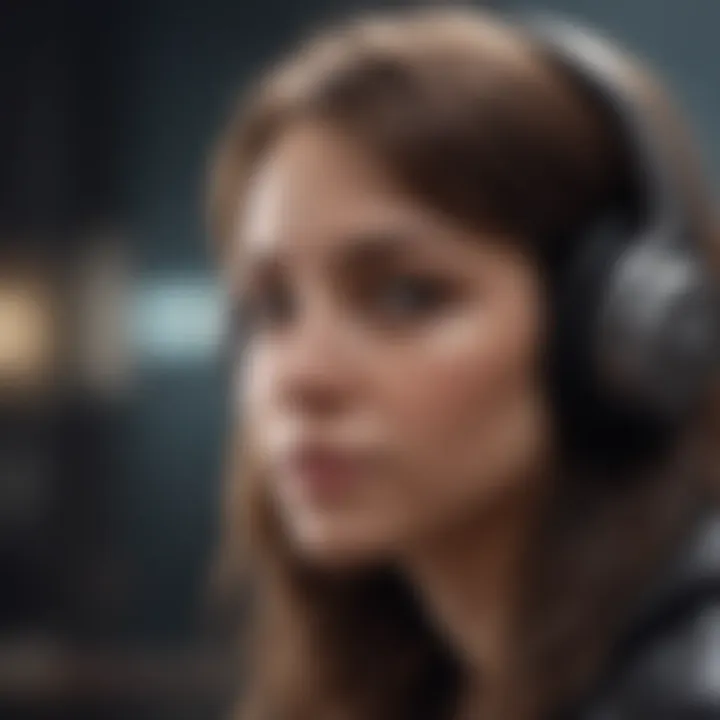
Recording techniques have seen remarkable progression since the invention of sound recording itself. Early methods, such as the phonograph, captured sound in very limited quality. However, the past few decades introduced several groundbreaking advancements in recording techniques.
Now, artists can utilize multi-track recording, allowing them to layer different sounds and instruments while maintaining their clarity. This is crucial for complex arrangements and enhancing the overall sound quality.
Furthermore, analog to digital conversion has transformed the recording landscape. Digital recordings provide higher fidelity, making it possible to capture the subtleties of live performances. Innovators have also developed technologies like Auto-Tune, which has dramatically changed vocal production. While some criticism exists regarding its use, it has undoubtedly made soundbreaking possible in a new way that allows for artistic expression.
Impact of Digital Audio Workstations
Digital Audio Workstations (DAWs) are among the most significant tools in modern music production. These software programs, such as Ableton Live, Pro Tools, and Fl Studio, offer a vast array of functionalities for musicians and producers. They enable extensive editing, sound manipulation, and mixing capabilities, which were once the domain of high-end studios.
One of the key benefits of DAWs is democratization of music creation. Today, aspiring musicians can produce high-quality tracks at home, overlapping the lines between amateur and professional. DAWs facilitate experimental approaches to sound by providing access to an extensive library of virtual instruments and plugins. This access fosters creativity and encourages artists to explore new genres and sounds, resulting in profound effects on soundbreaking across the board.
The Influence of Streaming Platforms
Streaming platforms have revolutionized how music is consumed and distributed. Services like Spotify, Apple Music, and Tidal provide artists the means to reach global audiences with unprecedented efficiency. The shift to streaming has not only changed the landscape of music accessibility but also impacted the music industry economically.
Additionally, streaming platforms gather robust data on listening habits. This information influences which songs get promoted, informing artists and producers about audience preferences.
"The way music is made, shared, and consumed will keep evolving alongside technology, reinforcing the idea that soundbreaking is an ongoing dialogue between art and innovation."
The impact of streaming extends beyond the artists to the listeners. Playlists curated by algorithms introduce users to new genres and artists, enriching the musical experience and broadening exposure to soundbreaking works.
Notable Artists and Their Contributions
The exploration of soundbreaking is incomplete without recognizing the artists who have played pivotal roles in this paradigm shift. Notable artists not only reflect trends but actively shape them. Their contributions have led to innovative practices that challenge conventions in sound, structure, and performance. As we delve into the contributions of key figures, we’ll appreciate how their vision has impacted the music landscape significantly.
Visionaries Who Shaped Soundbreaking
Visionaries are often at the forefront of musical evolution. They push boundaries and explore sounds that may be deemed unconventional at the time. These artists inspire others to break away from the norm. For instance, John Cage is known for his experimental compositions, which redefine traditional notions of music. His work, particularly 4'33", where silence becomes the medium, demonstrates that sound does not have to follow conventional patterns to evoke emotional response.
Another significant figure is Jimi Hendrix, who revolutionized rock music through his innovative guitar techniques. Hendrix's use of feedback and distortion was groundbreaking at that time and created a distinctive sound that influenced countless musicians. His performances combined technical skill with an emotive quality, expanding the concept of what rock music could convey.
"Every act of creation is first an act of destruction." – Pablo Picasso
This quote resonates with the journey of soundbreaking, where existing forms must often be dismantled to create new pathways in music.
Innovators in Contemporary Music
In the contemporary landscape, artists are leveraging technology and redefining genre boundaries to create music that reflects modern sensibilities. Björk, known for her eclectic style, has continually pushed sonic boundaries, combining elements of electronic, pop, and classical music. Her willingness to experiment with new sounds and technologies has made her an integral part of soundbreaking in recent times.
Additionally, Kendrick Lamar represents a shift in hip-hop, blending lyrical depth with innovative sound design. His albums like To Pimp a Butterfly incorporate jazz, funk, and even spoken word, demonstrating how genres can merge to produce powerful commentary in music. This shows the capacity of soundbreaking to not only entertain but also to provoke thought and discussion.
It's clear that the contributions of these artists have far-reaching effects. They challenge norms, inspire other musicians, and transform the auditory landscape in which we exist. Their influence serves as a testament to the ongoing evolution of music, ensuring that soundbreaking remains a dynamic and relevant concept in today’s society.
Cultural Impacts of Soundbreaking
The cultural implications of soundbreaking cover vast territories in music. It serves not just as an artistic expression but as an integral part of societal progression. Soundbreaking encapsulates the shifts in social consciousness, cultural narratives, and historical milestones. Understanding these cultural impacts will highlight its importance in both shaping and reflecting the modern music landscape.
Representation and Identity in Music
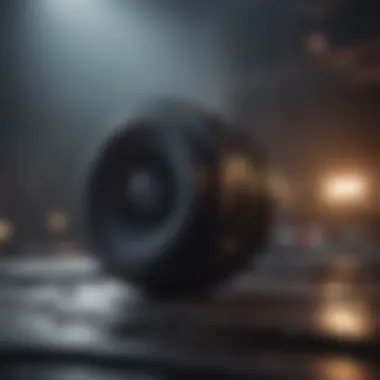
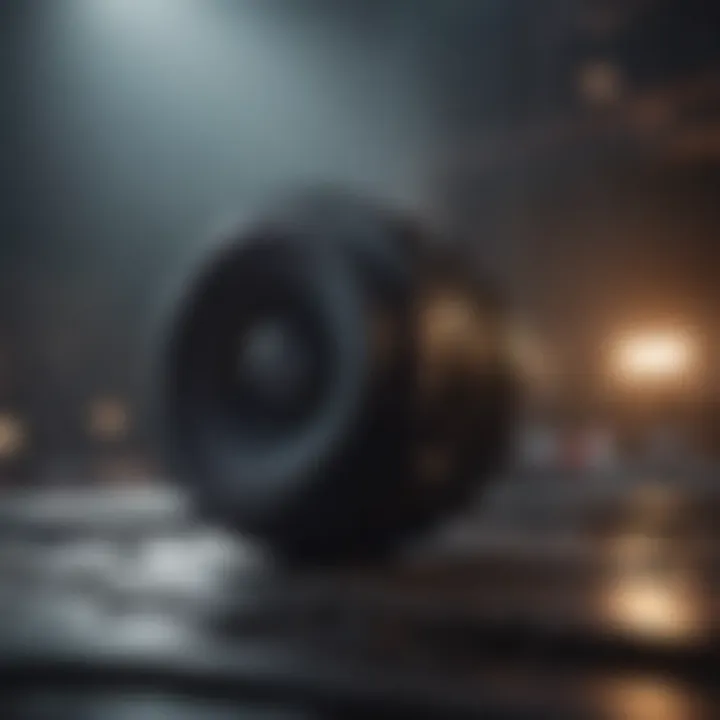
Representation in music has become a fundamental aspect of soundbreaking. Various artists use their music to express cultural identities and experiences. This representation is not merely confined to words but extends into sound, genre, and medium. For instance, hip-hop artists often incorporate elements that reflect their personal and communal backgrounds. This could be through the use of dialects, local rhythms, or even themes rooted in their daily realities.
Moreover, soundbreaking allows marginalized voices to be amplified. Artists like Kendrick Lamar and Beyoncé bring forward issues of race, identity, and injustice through their music. Their sound is distinct and unique yet resonates with a wider audience. This reflects a cultural evolution where music becomes a vehicle for empowerment and awareness.
The global music scene now embraces various cultural influences, resulting in an eclectic fusion of sounds. Genres that originate from specific regions, like Afrobeats or Reggaeton, gain popularity worldwide. This reveals a cultural interconnectivity where identity is celebrated through music, showcasing that soundbreaking is pivotal in recognizing and respecting diversity.
Soundbreaking as a Reflection of Society
Music acts as a mirror to society, revealing its current sentiments, struggles, and triumphs. Soundbreaking mirrors changes within the socio-political landscape. For example, during the civil rights movement in the United States, artists like Nina Simone and Bob Dylan used their music to address the pressing social issues of their time. Their lyrics served not only as artistic expressions but as calls to action, resonating deeply with the societal climate.
Furthermore, present-day soundbreaking continues this tradition by addressing contemporary issues such as climate change, inequality, and mental health. Songs that highlight these themes can often become anthems for movements, promoting solidarity and awareness. Music festivals and events sometimes serve as platforms for these ideas, uniting diverse audiences around shared causes.
"Music is the sound of our collective conscience. It represents what we live through, how we feel, and what we aspire to become."
In summary, the cultural impacts of soundbreaking represent a dynamic and ongoing dialogue between music and society. It continually evolves, shaped by influences from identity, representation, and the ever-changing realities faced by people. As music progresses, its role as a cultural influencer remains profound, offering insights into human experiences and societal norms.
The Future of Soundbreaking
The future of soundbreaking is a crucial area of exploration for understanding how music will evolve in the coming years. As we stand on the precipice of technological and artistic transformation, we can only anticipate the profound changes that lie ahead. This section highlights emerging trends, innovations, and the implications of artificial intelligence for music creation, painting a picture of a soundscape that is increasingly shaped by technology and new artistic perspectives.
Emerging Trends and Innovations
In recent years, we have begun to witness a wave of innovations that are reshaping how music is produced, consumed, and experienced. Traditional music-making methods continue to intertwine with modern technologies, giving rise to new genres and styles. Some key trends include:
- Hybrid Live Performances: Artists are increasingly blending live music with digital elements, creating immersive experiences that engage listeners on multiple sensory levels.
- Virtual Reality (VR) Concerts: This technology allows audiences to attend concerts in a virtual space. While the technology is still developing, VR has the potential to revolutionize live music experiences.
- Crowdfunding and Independent Releases: Platforms like Bandcamp and Patreon allow artists to circumvent traditional labels, directly interacting with their audience for funding and support.
Audio technology advancements also enhance the possibilities for soundbreaking. Improved sound systems and high-quality streaming services provide a clear and rich listening experience that influences how we appreciate music.
The Role of AI in Music Creation
Artificial intelligence is becoming a significant player in the music industry. Its capabilities range from assisting artists in composing music to generating unique soundtracks autonomously. The integration of AI raises several considerations for the future of creativity in soundbreaking:
- Algorithmic Composition: AI programs can analyze vast datasets of musical works to create new compositions. This process opens up debates about originality and the essence of creativity in music.
- Personalized Listening Experiences: AI curates music based on listeners' preferences, enhancing engagement and discovery. Through services like Spotify’s algorithms, music finds its way to the ears of those most likely to appreciate it.
- Collaborative Tools: AI can aid musicians in the songwriting process, providing suggestions and variations that could inspire new directions in their work.
Overall, the future of soundbreaking represents an interplay between technology and artistry. The trends and innovations currently unfolding will influence not only how music is made but also how it is perceived and experienced by future generations.
Epilogue
The conclusion serves a crucial role in this article, encapsulating the intricate dynamics of soundbreaking in music. It offers a chance to reflect on how sound has evolved and its implications in cultural contexts. Recognizing this impact is important, as it helps us understand the transformative power of sound in shaping emotions, identities, and societal narratives.
Summarizing the Impact of Soundbreaking
Soundbreaking has significantly influenced music across various genres and eras. Its historical roots provide a framework for understanding current musical landscapes. Innovative approaches have altered the way artists conceive sound, leading to the creation of new genres and styles. For instance, innovations in electronic music have redefined boundaries, merging traditional acoustic elements with modern technology. The democratization of music creation tools has empowered independent artists, making soundbreaking accessible to a broader audience. Furthermore, examining soundbreaking leads to insights about how social movements and cultural shifts are mirrored in music.
Soundbreaking reflects the ongoing dialogue between music creators and their environments, showcasing the interconnectedness of sound, society, and technological advancements.
The Ongoing Journey of Music Innovation
As we look forward, the journey of music innovation continues. Emerging trends indicate a strong integration of artificial intelligence in music production and composition. This presents new possibilities for experimentation, allowing artists to explore creative avenues previously unimaginable. Additionally, advancements in virtual reality and immersive audio experiences may redefine how audiences interact with music.
Future developments will likely expand the definition of soundbreaking, pushing boundaries further. As artists embrace these tools, they will continue to challenge existing norms. This ongoing evolution ensures that soundbreaking remains a vital concept not only in music but in understanding the broader cultural fabric.
In summary, the significance of soundbreaking lies in its ability to reflect and shape both artistic expression and societal engagement. As music evolves, so too will the frameworks that guide our appreciation and understanding of sound.







